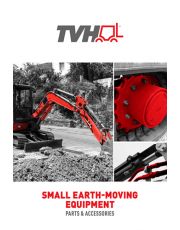The best bite for your bucket

Bucket teeth are an essential part of every excavator. There are many types of teeth, each of which have been developed for a certain application. Choosing the right bucket teeth for the job reduces their wear, but it's inevitable that they will eventually have to be replaced. To facilitate their replacement, the teeth are generally mounted to the bucket through an adapter. You can read all about it here.
What are bucket teeth?
Bucket teeth are an essential part of every excavator. They serve as material diggers and are in fact the only parts of the bucket that make direct contact with the ground. However, that also means that they wear out the fastest.
Types of teeth

Always choose the right bucket teeth for the job to ensure high productivity, bigger fuel savings and reduced wear:
| Long bucket teeth |
|
| Short bucket teeth |
|
| Penetration bucket teeth |
|
| Tiger bucket teeth |
|
| Twin tiger bucket teeth |
|
| Wide / flare bucket teeth |
|
6 adapters

To facilitate the replacement of worn out bucket teeth, they are generally mounted to the bucket through an adapter. That adapter is either welded directly onto the bucket, or is bolted on.
There are 6 types of adapters:
- Bottom mount
- Bottom mount with hook
- Flush mount
- Tooth bar adapter
- Loader adapter (full top, ¾ bottom)
- Excavator adapter (¾ top, full bottom)
Why replace them?
Despite precautions and correct use, wear of bucket teeth is inevitable. Make sure to always replace bucket teeth before they wear through, and most definitely before they fall off! In that way, you avoid damaging the bucket, and the high cost of replacing it.
Ready to order?
Need new teeth for the bucket of your mini-excavator, skid steer loader or compact track loader? TVH’s got your back! You can order parts online via MyTotalSource, or you can contact us if you need some assistance.
Order tip! Make sure you have the following things at hand when ordering:
- reference on the tooth
- reference on the pin
- reference on the adapter
- type of adapter
- machine type
- blade thickness bucket
- application
- how many teeth are needed
